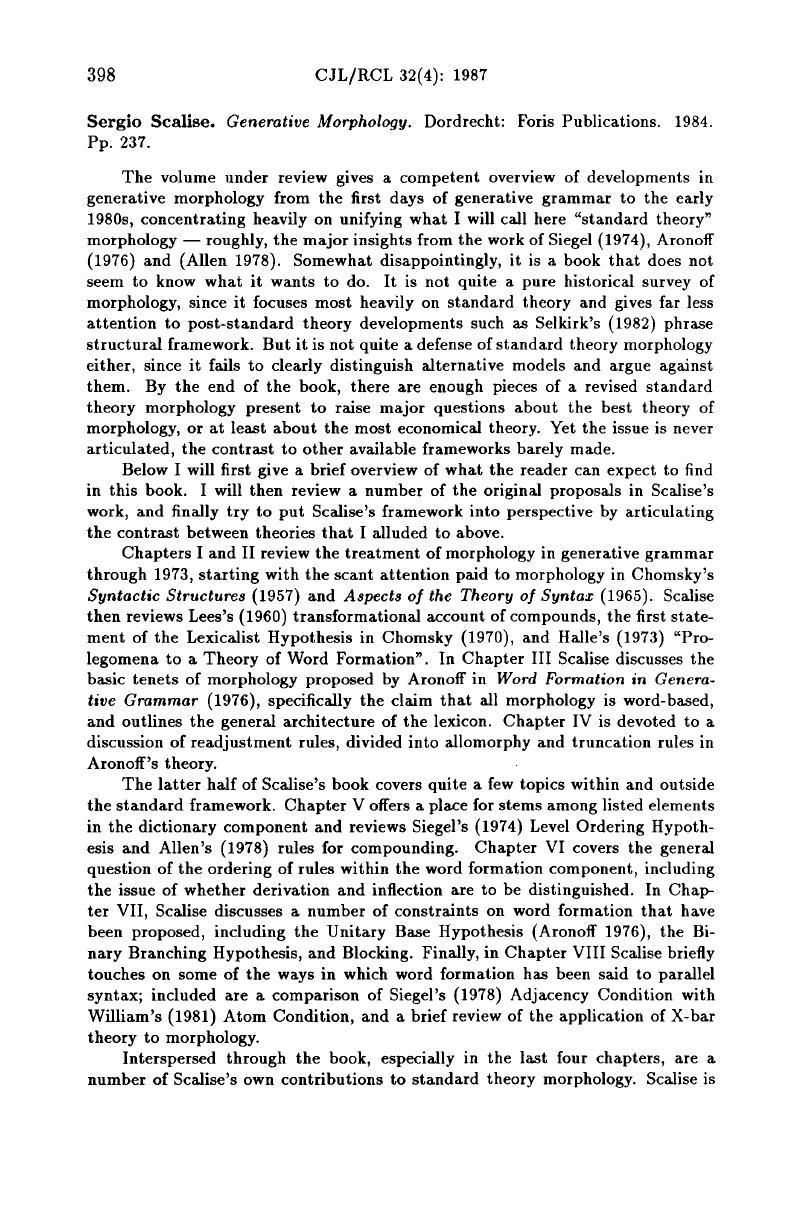No CrossRef data available.
Article contents
Sergio Scalise. Generative Morphology. Dordrecht: Foris Publications. 1984. Pp. 237.
Published online by Cambridge University Press: 27 June 2016
Abstract
An abstract is not available for this content so a preview has been provided. Please use the Get access link above for information on how to access this content.

- Type
- Reviews/Comptes Rendus
- Information
- Canadian Journal of Linguistics/Revue canadienne de linguistique , Volume 32 , Issue 4 , December 1987 , pp. 398 - 405
- Copyright
- Copyright © Canadian Linguistic Association 1987
References
Allen, Margaret
1978
Morphological Investigations. Ph.D. thesis, University of Connecticut.Google Scholar
Chomsky, Noam
1970
Remarks on Nominalization. Pp. 184–221 in Readings in English Transformational Grammar. Jacobs, Roderick A. and Rosenbaum, Peter S., eds. Waltham, Mass.: Ginn.Google Scholar
Halle, Morris
1973
Prolegomena to a Theory of Word Formation. Linguistic Inquiry
4:3–16.Google Scholar
Lieber, Rochelle
1980
On the Organization of the Lexicon. Bloomington: Indiana University Linguistics Club.Google Scholar
Lieber, Rochelle
1984
Consonant Gradation in Fula: an Autosegmental Approach. Pp. 329–345 in Language Sound Structure. Aronoff, Mark and Oehrle, Richard, eds. Cambridge, Mass.: MIT Press.Google Scholar
Lieber, Rochelle
1987
An Integrated Theory of Autosegmental Processes. Albany: SUNY Press.Google Scholar
Siegel, Dorothy
1978
The Adjacency Condition and the Theory of Morphology. Pp. 189–197 in Proceedings of NELS-8. Stein, Mark J., ed. Amherst, Mass.: GLSA.Google Scholar
Williams, Edwin
1981
On the Notions ‘Lexically Related’ and ‘Head of a word’. Linguistic Inquiry
12:245–74.Google Scholar


